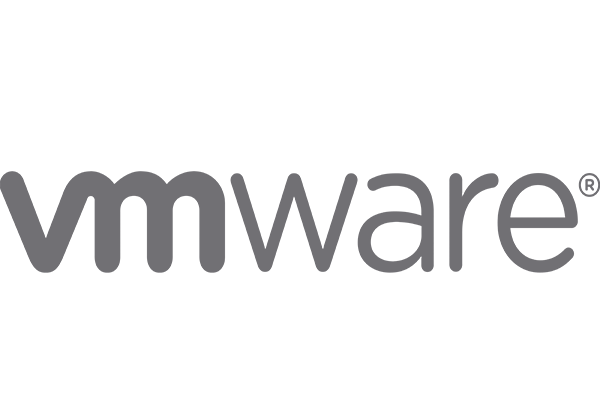Streamlining IT processes is not just a cost-saving strategy – it’s a necessity for organizations to remain competitive, secure, and adaptable in today’s hybrid work landscape. VMware announced advanced automation capabilities and expanded third-party integrations delivered through the Anywhere Workspace platform that provide organizations with the tools needed to simplify IT workflows, enhance security, and improve overall efficiencies.
“Implementing automation capabilities across all aspects of IT workflows is essential for creating a self-healing, self-configuring, and self-securing environment, which aligns with our autonomous workspace vision,” said Shankar Iyer, senior vice president and general manager, End-User Computing, VMware. “Today’s announcements of next-gen Mac management powered by a modern automation toolkit and new integrations with Intel will equip organizations with unified management and insights that advance IT modernization and security.”
“It’s imperative to maintain a comprehensive view across the modern workspace and our strategy involves enhancing it through a platform-based approach and harnessing automation whenever possible. As a global team working with more than 90 countries, a holistic view across our estate is crucial,” said Scott Gardiner, group end user computing manager, Rentokil. “With Workspace ONE Intelligence as our central data service, we can see real-time security posture data and experience data to help us troubleshoot and remediate issues effectively. The ability to drill down to specific security issues and device timeline data allows us to simplify our support and remediation workflows. Once we pinpoint exactly where we have issues, we can build automations with Freestyle Orchestrator to proactively resolve, allowing us to scale our IT organization.”
Next-Gen Mac Management Simplifies IT Workflows and Saves Cost
macOS adoption is on the rise as organizations support device choice programs, but the use of siloed tools to manage these endpoints can cause complexity for IT teams and inconsistent experiences for employees. Organizations recognize that integrating all devices into a comprehensive UEM strategy is the best way to improve security and reduce the cost and complexity of managing endpoint diversity.
VMware End User Computing addresses this need by introducing innovative new Mac management capabilities supported by a modern automation toolkit in Freestyle Orchestrator, adding to the robust macOS management features already offered in Workspace ONE UEM. Support for macOS endpoints in Freestyle Orchestrator delivers a modern, low/no-code platform to create and automate complex IT workflows, including app and patch deployments, software and resource sequencing, and desired state management of the OS. This allows admins to work more efficiently by enabling powerful automation for essential daily tasks such as onboarding and configuring Macs.
To further establish a self-healing, self-configuring, and self-securing autonomous workspace, VMware is announcing Hub Health, new third-party security baselines, and a new updates management dashboard for macOS. VMware will bring self-healing capabilities via Hub Health, a unique, always-on service running on the endpoint. Hub Health is powered by Workspace ONE Intelligent Hub and Workspace ONE UEM to automatically identify macOS device health trends and drive proactive UEM-led remediations for common issues. With new third-party security baselines for macOS, IT administrators can easily manage recommended configuration settings from common security standards without manual scripting. Alongside VMware Freestyle Orchestrator, IT can apply settings uniformly across all devices to ensure compliance and reduce errors. The new macOS updates management dashboard provides greater insights to secure Mac devices by supporting patch scheduling, user and device targeting, error handling, and escalations. These leading-edge Mac management capabilities are seamlessly integrated, eliminating management silos, which saves costs, enhances IT flexibility, and boosts security and compliance.
Chip Level Vulnerability Management Enables Pervasive Security
Enabling end-to-end security for today’s distributed workforce requires collaboration with a strong partner ecosystem. VMware continues to innovate with our technology partners and today is unveiling expanded integrations with Intel that enable more secure hybrid experiences.
Expanded Workspace ONE Integration with Device Vulnerability Insights from Intel
At VMware Explore 2023 Las Vegas, VMware introduced vulnerability management dashboards in Workspace ONE and emphasized the need for comprehensive vulnerability management, including assessment, prioritization, remediation, and reporting. Today, VMware is announcing an expansion of its partnership with Intel to automate the detection of vulnerabilities at the hardware, firmware, and driver level – further advancing its commitment to holistic vulnerability management.
The exclusive integration with Intel Device Health cloud service will feed telemetry data from all Intel Core processors to Workspace ONE UEM to provide improved vulnerability insights below the operating system. IT and security teams will be able to protect their organizations more proactively against firmware and hardware level threats with the connection of Intel’s vulnerability insights and Workspace ONE vulnerability reporting and remediation capabilities. The integration will enhance endpoint security and increase speed and efficiency of vulnerability identification and remediation.
“Intel and VMWare have a longstanding collaboration and we are proud of today’s latest step to deliver enhanced IT management and security benefits for our joint customers,” said Michelle Johnston Holthaus EVP and GM, Intel Client Computing Group. “The integration of Intel vPro management features and now also Intel Device Health cloud service, with Workspace ONE, provide a unique endpoint solution that will help businesses meet the needs of their hybrid workforce.”















